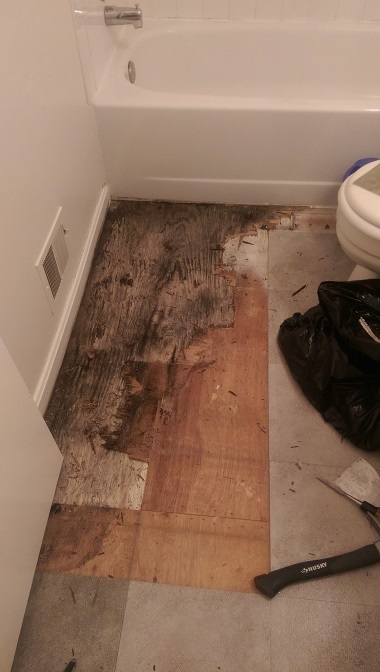How to Stop Water Damage in Your Bathroom
This SiteJust how do you feel in regards to Common Causes of Water Damage in a Bathroom?

The restroom is exceptionally vulnerable for damp buildup and prospective water damages as a result of the frequent use of water in it. This write-up offers easy evaluation strategies to aid spotting water damage dangers.
The constant use water in the bathroom makes it incredibly susceptible for damp buildup and also potential water damage. By examining it frequently, you can minimize water relevant problems.
The following set of evaluations is simple to do as well as must be done as soon as in every 3 months in order to maintain your bathroom in good shape and to prevent prospective water damages triggered by the tub, the shower, pipeline joints as well as plumbing, sinks, closets, and also the commode
Do not forget executing these examinations and be thorough while performing them. Keep in mind that these simple inspections can save you a lot of money by offering early indicators for water damage
Bathtub and Shower
The shower and bathtub call for unique focus and also upkeep. Inspect the ceramic tiles and replace if fractured. See to it that there is no missing out on cement between the ceramic tiles. Inspect and also change split caulking at joints where the wall surfaces satisfy the floor or the bath tub. Obstructed drains pipes as well as pipes problems will certainly protect against the tub from drying and might show severe issues beneath the bathtub. Seek advice from an expert right away to prevent structural damages. Focus on discolorations or soft locations around the bath tub walls as they may show an interior leak.
Plumbing
Signs for water damage are tough to discover because the majority of pipelines are installed inside the wall surfaces.
Pay unique attention to floor covering as well as walls moisture and also spots as they may show an unnoticeable plumbing problem. Examine wetness degrees in adjacent rooms too.
Sinks as well as Cabinets
Sinks and also cupboards are exposed to dampness as well as moisture everyday and are commonly neglected. Check frequently under the sink and also on the counter top over it. Repair any kind of drip in the trap as it might suggest drainpipe issues. Check out the sink, sluggish draining pipelines may show a blocked drainpipe. Replace sink seals if they are fractured or loose.
The Commode
The toilet is a prone water junction. Inspect the water lines and search for leakages around the bathroom seat, in the tube, and under the water container. If you detect any type of signs of wetness on the flooring around the toilet, look for leakages in the toilet rim and also tank seals.
Understand that hanging commode bowl antiperspirants raises the possibilities for obstructions.
TIPS TO PREVENT WATER DAMAGE IN THE BATHROOM
The average household uses approximately 80-100 gallons of water per person per day. For a family of 4, that's almost 2,500 gallons of water a week! The largest portion of this consumption comes from bathroom use. Flushing the toilet uses the most water, followed by taking a shower or bath. With that much water running through the home, water damage in the bathroom is bound to happen. Knowing how to spot signs of a water leak is essential to preventing long-term damage. This guide provides you with tips to reduce the impact of water damage on your bathroom.
CAUSES OF BATHROOM WATER DAMAGE
Pipe breaks are the most common cause of water damage we see in our daily jobs. The age of a pipe plays a large role in a pipe break as well as corrosion. Over time, the metal begins to break down, allowing water to escape. Frozen pipe breaks are also a concern in the winter months. Toilet overflows caused by paper products or children flushing inappropriate items. Degraded caulking around the toilet or bathtub can allow water seepage, sometimes behind the fixture, into the subfloor or walls. Condensation forms when the water in a pipe is cooler than the air temperature. Beads of water form on the exterior of the pipes, sometimes so much so that the water begins to drip and pool below. Sink or shower backups created by poor drainage. HOW TO PREVENT WATER DAMAGE IN YOUR BATHROOM
Inspect your toilet supply line for worn or frayed hoses and replace them as needed. Winterize your plumbing to prevent a frozen pipe break. Use vent fans to prevent condensation that can lead to mold growth. Routinely check and replace degraded caulking around your toilet or bathtub. Increase the temperature in your toilet tank and insulate your pipes during the warm summer months to keep condensation from forming. Use child safety locks on the toilets. Flush only toilet paper. "Flushable" wet wipes are actually not good for your plumbing system. Additionally, feminine hygiene products should not be flushed. Prevent water from escaping the tub or shower. Make sure shower curtains are in good condition. Inspect shower doors and replace the seal strip if necessary. Wipe up any water that accumulates on the floor and use bath mats. Water left to sit can cause damage to the tiles and flooring. Refrain from using bath products containing heavy oils to avoid a clogged drain.

We hope you enjoyed our section about How to Prevent Bathroom Water Damage. Thank you for spending some time to browse our blog post. For those who appreciated our blog post please be sure to share it. We appreciate reading our article about How to Fix a Water Damage Bathroom.
Call Us Today